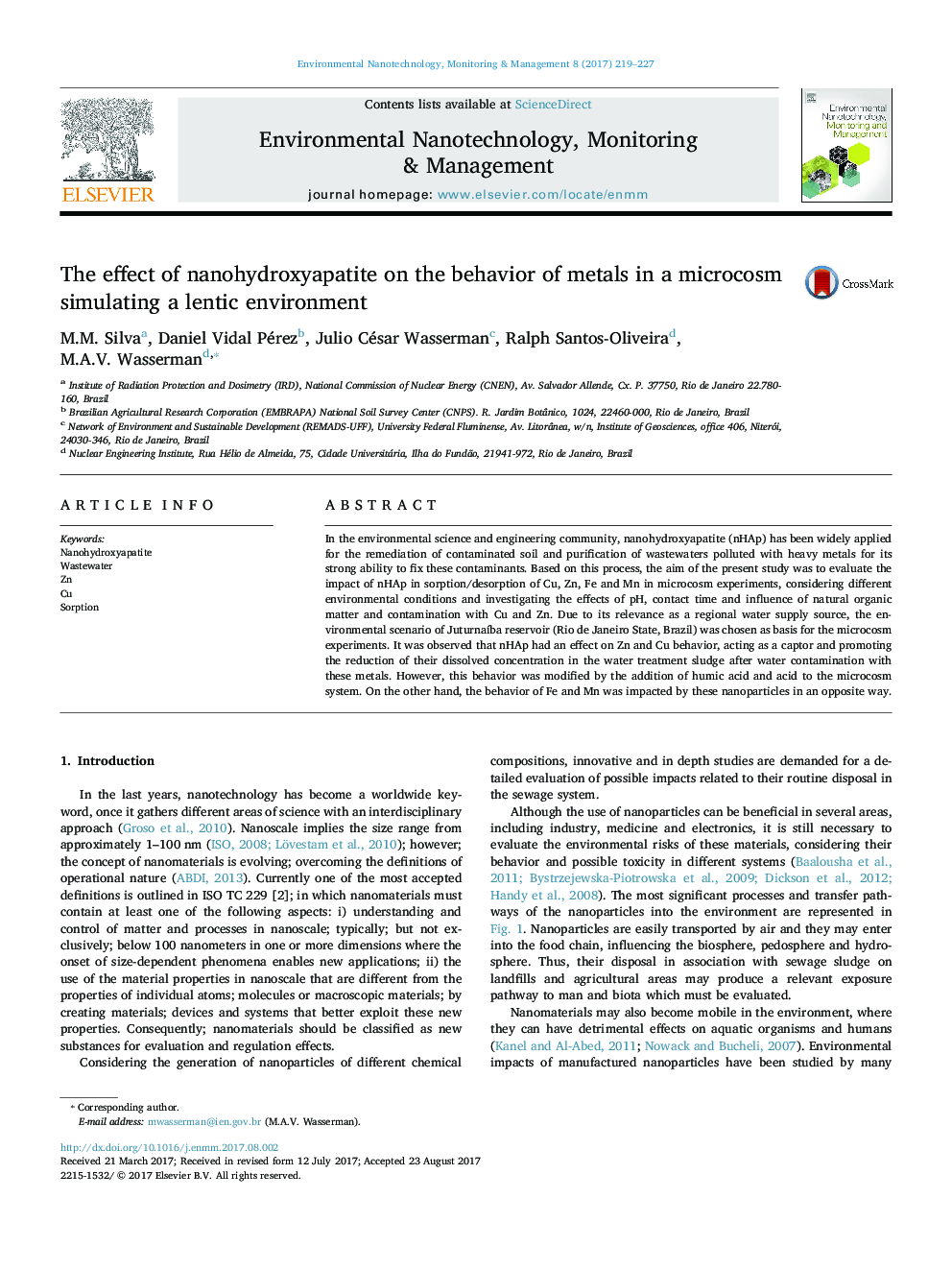| کد مقاله | کد نشریه | سال انتشار | مقاله انگلیسی | نسخه تمام متن |
|---|---|---|---|---|
| 5748504 | 1619099 | 2017 | 9 صفحه PDF | دانلود رایگان |
- The influence of nanohydroxyapatite on the sorption processes of metals was observed through a simulated lentic environment.
- Acidified environment and humic acid presence can minimize the behavior of nanohydroxyapatite as a captor of Cu and Zn.
- The presence of nanohydroxyapatite in industrial effluents is able to modify the pattern of Cu and Zn deposition in sediments.
In the environmental science and engineering community, nanohydroxyapatite (nHAp) has been widely applied for the remediation of contaminated soil and purification of wastewaters polluted with heavy metals for its strong ability to fix these contaminants. Based on this process, the aim of the present study was to evaluate the impact of nHAp in sorption/desorption of Cu, Zn, Fe and Mn in microcosm experiments, considering different environmental conditions and investigating the effects of pH, contact time and influence of natural organic matter and contamination with Cu and Zn. Due to its relevance as a regional water supply source, the environmental scenario of JuturnaÃba reservoir (Rio de Janeiro State, Brazil) was chosen as basis for the microcosm experiments. It was observed that nHAp had an effect on Zn and Cu behavior, acting as a captor and promoting the reduction of their dissolved concentration in the water treatment sludge after water contamination with these metals. However, this behavior was modified by the addition of humic acid and acid to the microcosm system. On the other hand, the behavior of Fe and Mn was impacted by these nanoparticles in an opposite way.
124
Journal: Environmental Nanotechnology, Monitoring & Management - Volume 8, December 2017, Pages 219-227
